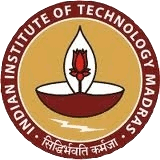Team:IIT Madras/Safety
From 2013.igem.org
Safety
This is the IIT Madras Safety page
1. Would any of your project ideas raise safety issues in terms of

1.1 Researcher safety

-
1.1.1 Personal protective equipment

- Two layers of thick nitrile gloves are worn. Care is taken to avoid puncturing, tearing the gloves. They are discarded as hazardous waste after used.
- Protective eye glasses are used. In case splashes, sprays, or aerosols are generated, face shields are used to prevent accidental contact with eyes, nose, or mouth.
- Hands are washed after handling the chemicals and also after removing the personal protective equipment.
-
1.1.2 Safe work Practices

- Work is conducted in a specific contained area. All the containers are labeled with the name of the material and also a warning in case of Endocrine Disruptors.
- Containers are properly sealed and wiped before taking it out of the cabinet.
The chassis being used is non-hazardous E. coli DH5-alpha (NIH Risk Group 1) and requires fairly basic safety measures. Since we are also working with estrogen receptor binding drugs/analogs which could be hazardous to humans, we take required care to use these compounds in small amounts and avoid direct exposure by contact or inhalation. Once we are done with the experiment we dispose the agar plate and broth after autoclaving with proper quarantine.
1.2 Public safety

Once kits based on our enantiomer detector /drug screening/bioremediation system are developed, most safety concerns are similar to ones associated with Synthetic Biology. If industries were to take up the kit to large-scale separation/drug screening/remediation processes, they would likely contain areas with high concentration of estrogen receptor binding chemicals. These areas must be quarantined, and subject to Biosafety laws applicable as appropriate.
1.3 Enviornmental Safety

The estrogen receptor binding drugs can be toxic to aquatic life. In the lab, we collect and dispose waste, including rinsate, as recommended by the Institute’s hazardous waste policy.
2. Do any of the new BioBrick parts (or devices) that you made this year raise any safety issues?

No.
3. Is there a local biosafety group, committee, or review board at your institution?

Yes.
The Department of Biotechnology at The Indian Institute of Technology Madras has provided us with Biosafety level I facility for all our experiments. We have received an approval for our project from the Head, Department of Biotechnology, after considering the various components involved. We have also been encouraged since our project involves bioremediation of harmful endocrine disruptors from the environment.
4. Do you have any other ideas how to deal with safety issues that could be useful for future iGEM competitions? How could parts, devices and systems be made even safer through biosafety engineering?

In synthetic biology, issues of major concern are the containment of genetically modified organisms and the prevention of horizontal gene transfer. The standard BioBrick design or the vector can be modified to have a ‘suicide system’ in place in case any of the above was to happen. There is ample literature available on the role that suicide genes can play in achieving the goals of Synthetic Biology (John Davison, Environmental Biotechnology 2005). More and more systems based on this are being developed every year – Eg: PezAT toxin antitoxin system (Mutschler H et al, PLoS Biology 2011)
 "
"


